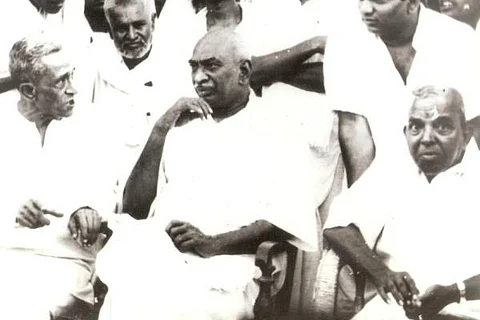

The VIP culture in India in its essence suggest that rulers are a class apart from the ruled and no one, not even a court, can question them. All entitlements like beacon light, motorcade and Black Cat commando security cover flow from this attitude.
Sometimes, tokenisms such as banning the use of red beacons on official cars also help. However, entrenched VIP culture will not end with mere removal of red beacon light.
The ministers of modern India can take a few lessons from leaders of post-independent India who not only advocated austere living, but also exemplified it through their own lives.
The VIP culture of today is a post-Indira phenomena. In June 1975, the verdict of the Allahabad High Court convicted then Prime Minister Indira Gandhi of electoral malpractices and debarred her from holding any elected post. The verdict delivered by Justice Jagmohanlal Sinha is widely believed to have led to the imposition of Emergency in India on June 25, 1975.
Indira, who apologised for the emergency after she lost power in 1977, however said in November 1979, after the collapse of the Janata experiment, that she was disqualified “by a petty judge” for a minor offence.
The attitude of entitlement Indira displayed was not always prevalent amongst older politicians.
Leaders of an earlier era were influenced by the austerity of Mahatma Gandhi, the epitome of simple living and high thinking. Though Sarojini Naidu was said to have once jokingly said that it cost the nation a fortune to keep Gandhi living in poverty.
Gandhians of the post-independent India like Sardar Vallabhbhai Patel and C Rajagopalachari aka Rajaji were known for their austere lifestyles. Though Nehru was known to be flamboyant, he was clean and democratic to the core. He used to often jump security cordon to mingle with the people whom he genuinely loved.
Maybe assassination of leaders like Indira Gandhi has erected a wall of security between the people and the ruling class. Prior to Indira, former US presidents Abraham Lincoln and John F Kennedy were assassinated. But security in the US continues to be invisible, not intimidating like in India. VIP motorcades like the ones in New Delhi and elsewhere in India is unknown in the West.
At the root of the problem is systemic corruption. When Rajaji was the chief minister of Madras, he ordered the corridors of the Secretariat to be cleared of politicians.
And K Kamaraj, the chief minister of Madras Province, ran the state with just around 15 Ministers and still managed to provide an efficient administration. He died with just over Rs 200 in his pocket. During his tenure, his Ministers got a hand pump set up in his aged mother’s house, so that she did not have to go to the street corner to get water. Kamaraj recovered the expenses incurred from the Minister’s salaries, which in any case was not much.
His Minister Kakkan, a Dalit leader, regularly travelled by bus after demitting office and the media did not chase him around, as they did Venkaiah Naidu when he took a bus in New Delhi the other day.
Communists are known for their simple living. They draw no salary for their posts and they are paid by the party and they have shared accommodation. Examples of such squeaky-clean leaders are abound, like Nirupen Chakraborty who, when demitting office as Tripura Chief Minister walked out of the Secretariat with a small suitcase that had all his worldly possessions. Or EMS Namboodiri who gave away all his land holdings to the poor.
Lal Bahadur Shastri, as AICC general secretary, used to give his wife Lalitha a monthly allowance of Rs 40. When he came to know that she had managed to save ten rupees out of it, he felt he was overpaying her and cut ten rupees from her allowance.

Image: Via Wikipedia Commons
Though his tenure as Prime Minister was short-lived, he was a shining example of a diminutive man who walked tall thanks to his austere lifestyle.
It was not as though there was no corruption before Indira’s time. The Mundhra scandal rocked Nehru’s Government in the 1950s leading to the resignation of the finance minister TT Krishnamachari. Ironically the scam was exposed by Feroze Gandhi, Indira’s husband and Nehru’s son-in-law.
Corruption may have become a way of life in Tamil Nadu during the 50 years of Dravidian rule. But the five-time chief minister M Karunanidhi still lives in a street corner house in Gopalapuram in Chennai, though he has been accused of introducing “scientific corruption”.
The difference is that the corrupt were not brazen about it like they are now. A brazenness born out of the current VIP culture.